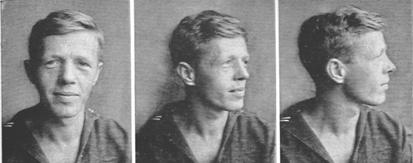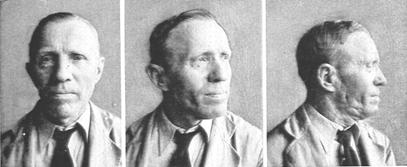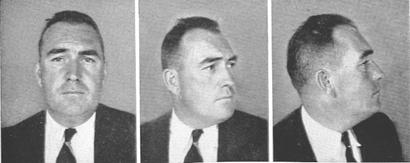|
(Photographic Supplement, Plate 32)
Throughout the northwestern European area, from the British Isles to the Baltic
States, and as far south as southern Belgium, south-central Germany, and the Carpathians,
the Nordic race has combined and blended profusely with various types of unreduced Upper
Palaeolithic survivors. Examples of such blendings will be seen on this and the next two
plates.
Fig. 2 (3 views). A Bergen sea captain, of the same general type, brachycephalic owing to an increase in head breadth unaccompanied by length reduction. The Tronder type is usually higher-headed, longer-faced, less dolichocephalic, and heavier in body build and in facial features than the Eastern Valley or Hallstatt Iron Age Nordic type.
Fig. 3 (3 views). Trondelag-like types are by no means confined to Norway. This individual is a Lett from Kurland of predominantly Nordic affiliation, but broader- headed and less delicate of facial features than the classic Iron Age type. Nordics of this general class are common in the Baltic Republics.
Fig. 4 (3 views). A Highland Scot from Morayshire; tall, large-headed, brown-haired, with an extremely long face and a high cranial vault, he represents a local North British Trondelag approximation, either through the absorption of indigenous Upper Palaeolithic elements, or through importation from Ireland with the Gaelic invasions, or from Scandinavia.
|



